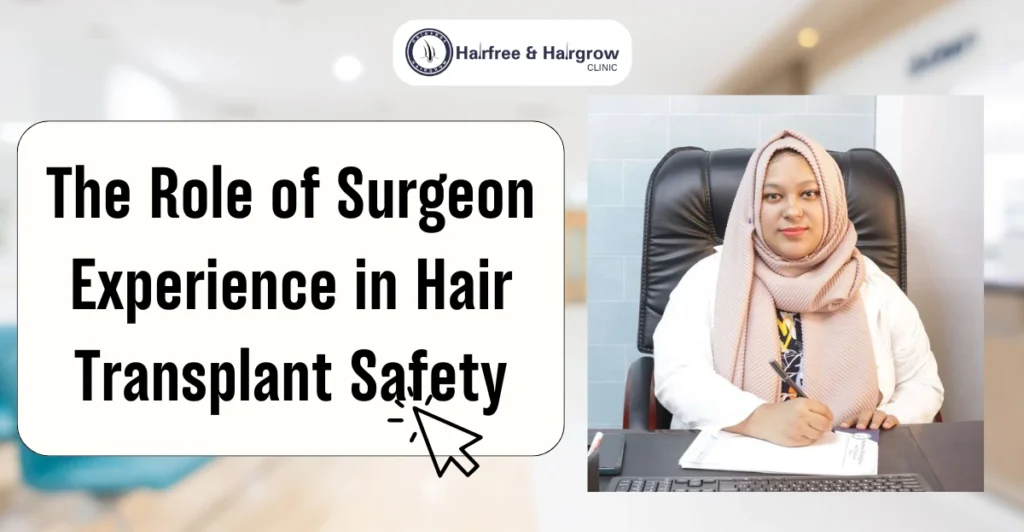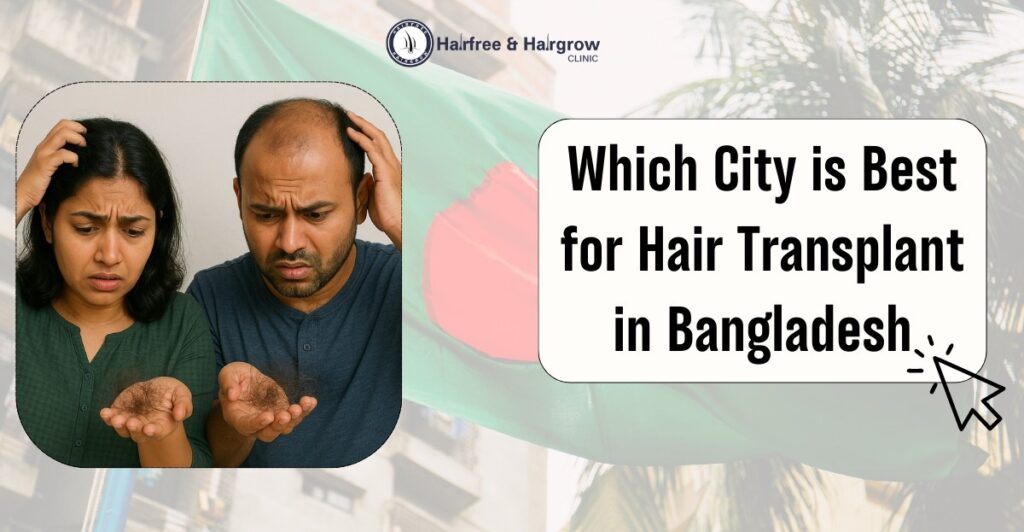After a hair transplant, one common concern is the formation of scabs. While it may seem concerning, scabbing is a natural part of the healing process. Knowing how to safely remove scabs after a hair transplant can help ensure a smooth recovery without affecting the success of the procedure. In this guide, we’ll discuss the best practices for scab removal, how to care for your scalp, and when you should seek medical advice.
Table of Contents

Why Do Scabs Form After a Hair Transplant?
During a hair transplant, small incisions are made in the scalp to implant hair grafts. As these wounds begin to heal, scabs form as a protective barrier to prevent infections and promote healing. These scabs usually appear about 3 days after the surgery and will typically fall off on their own within 7-14 days. It’s important to allow them to heal naturally to avoid damaging the hair grafts.
Our Clinic Location: Hair Transplant in Dhaka
Steps to Safely Remove Scabs After a Hair Transplant
- Recommended Washing Techniques
After about 3 days post-surgery, you can begin washing your hair gently. Use lukewarm water and a mild shampoo. Avoid rubbing your scalp too hard—just gently pat the area. Washing helps soften the scabs, making it easier for them to fall off naturally. - Use of Mild Shampoos and Conditioners
Stick to mild, fragrance-free shampoos that won’t irritate your scalp. A conditioner can help soften the scabs further, but be sure to consult your doctor before using any products other than those recommended. - How to Gently Massage the Scalp to Aid in Scab Removal
After 7-10 days, you can begin gently massaging your scalp if your doctor allows it. Use light, circular motions with your fingertips—never your nails. This will help dislodge scabs without harming the transplanted hair grafts. - Avoiding Scratching or Picking at Scabs
Picking at scabs can lead to infections or even dislodge the hair grafts, which can affect the success of your transplant. If scabs don’t fall off naturally, don’t force them—just continue to wash gently and let your body heal on its own.
By following these steps, hair transplant patients in Bangladesh can ensure a smooth recovery and that their new hair grows back healthy and naturally. If you have any concerns or need further assistance, our team of top surgeons at HairFree and HairGrow Bangladesh are here to guide you through every step of your hair restoration journey.
Do’s and Don’ts for Scab Removal
Do’s:
- Follow your doctor’s advice on washing and scalp care.
- Use a saline solution spray for the first 5 days after surgery to keep the area moist.
- Be patient and let the scabs fall off naturally.
- Rest well and avoid strenuous activities for at least a week.
Don’ts:
- Avoid scratching or picking at the scabs.
- Do not use harsh shampoos or conditioners.
- Avoid alcohol, smoking, and taking certain medications like aspirin unless advised by your doctor.
- Don’t use a hair dryer or expose your scalp to direct heat.
When to See a Doctor
If the scabs don’t fall off within 10-14 days or if you notice any signs of infection—such as redness, swelling, pus, or excessive itching—contact your hair transplant surgeon immediately. It’s always better to be cautious and seek professional advice if anything seems unusual.
Conclusion
Scabs are a normal part of the hair transplant healing process. By following the proper steps for care and washing, you can help the scabs fall off naturally without affecting your results. Always consult your doctor for personalized care instructions and never hesitate to ask questions during your recovery.
FAQ
Scabs typically last between 7 to 14 days after a hair transplant and fall off naturally.
Gently wash your hair with lukewarm water and a mild shampoo. Pat your scalp softly and avoid rubbing or scratching.
Yes, picking scabs can dislodge the hair grafts and affect the overall results of your transplant.
If scabs haven’t fallen off after 10-14 days, consult your doctor. Avoid using any home remedies without professional advice.

Written By
Dr. Nazmin Nipa
Medical Officer & Hair Transplant Surgeon
Dr. Nazmin Sultana Nipa is a distinguished hair transplant doctor in Bangladesh, known for her advanced skills in hair restoration. As a Medical Officer and Hair Transplant Surgeon, Dr. Nipa combines her extensive experience in the field with a focus on transparency and patient-centered care.
Disclaimer
We’ve made all possible efforts to ensure that the information provided here is accurate, up-to-date and complete, however, it should not be treated as a substitute for professional medical advice, diagnosis or treatment. See Detailed Disclaimers Here.



